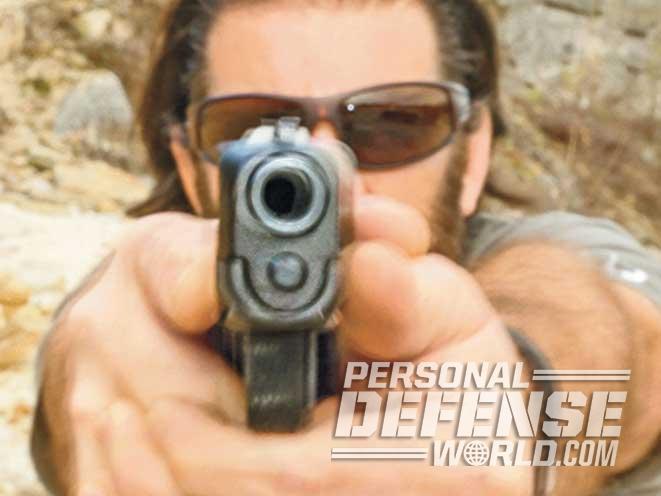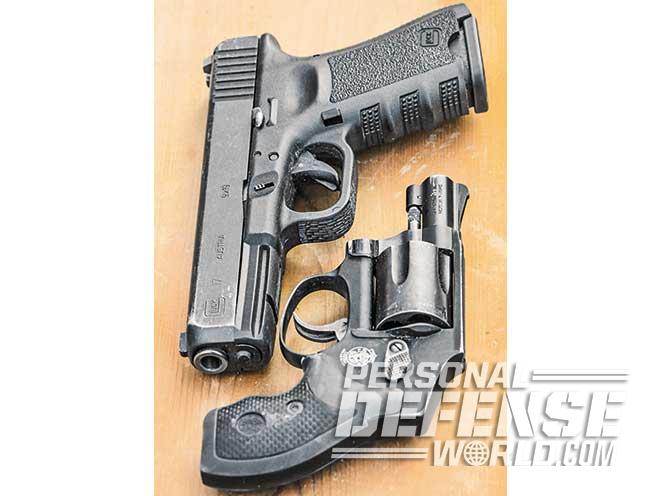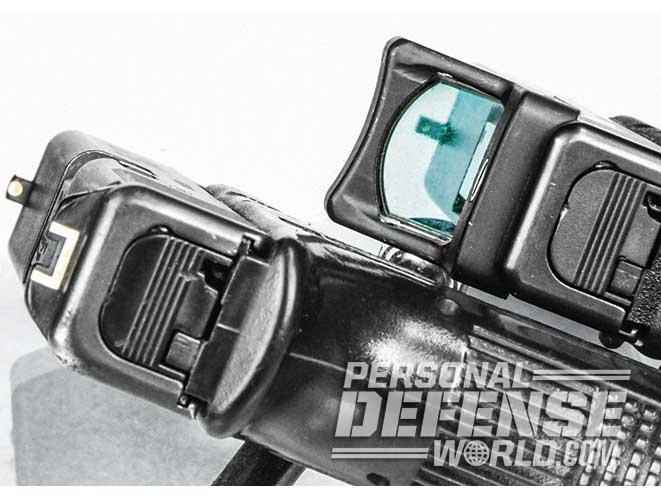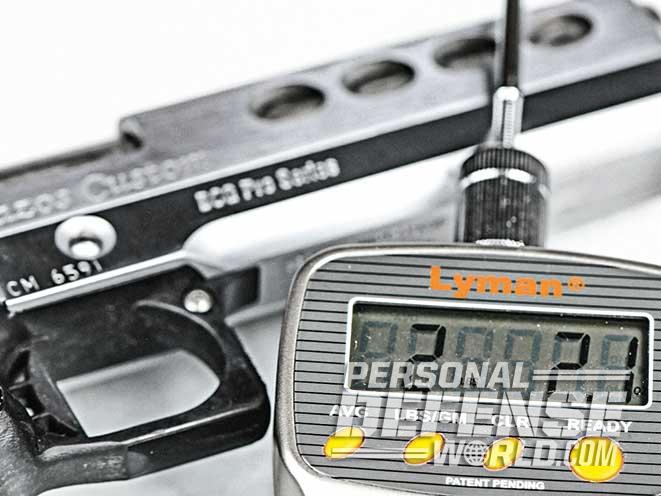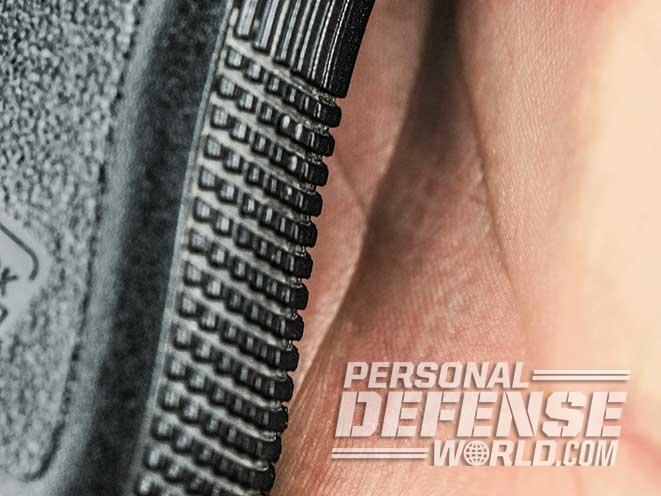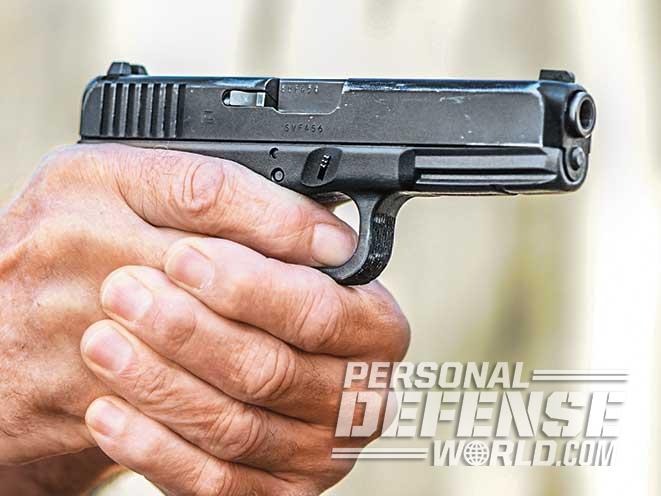The large majority of self-defense shootings take place at close range and require only a moderate level of precision. When precision is required, however, you need to deliver it on command. Here are three important tips that can help you to develop the skills for making precision shots when you need to most.
Crush Grip

Students often ask how hard they should be gripping their gun. My answer is always the same and I’ll tell you exactly what I tell them: “Grip the gun as hard as you can, then double the pressure.”
Advertisement — Continue Reading Below
Of course, I’m asking you to do the impossible, but I hope that I’m making my point. Having a “crush grip” on the gun has significant benefits. Nature gave you that crush grip for a reason. A crush grip makes sure that you don’t drop your life-saving tools even when faced with a threat. As a result, a crush grip is a natural reaction in a defensive situation. When you face a life-threatening attack, you will put that grip into play without thought. As a result, it makes sense to make that crush grip a part of your regular training.
- RELATED STORY: Range Masters – How To Improve Your Shooting Skills
A great side benefit of a crush grip is that it helps you to isolate your trigger finger. When you move one finger, the rest of our fingers want to move as well. If you move the rest of the fingers when you press your trigger finger it can cause problems with accuracy. When you need to make a precision shot, this can be a serious issue. You see, all those other fingers are gripping your handgun. If your fingers are moving, it is likely that your handgun is also going to move. Movement isn’t going to help you make that tough shot.
If you grasp the gun with a crush grip, you make it difficult for the movement of the trigger finger to influence your other fingers. Six pounds of pressure from the trigger finger is hardly an influence on the rest of your hand when it is exerting 24 pounds of pressure. As a result, your gun remains steady and you increase the likelihood of getting precision shots. When it comes to making a precision shot under stress, having a crush grip can go a long way toward getting the results you need.
Advertisement — Continue Reading Below
Crisis Checklist

Making a precision shot isn’t a matter executing a simple skill. Instead, hitting a precision target is a set of complex tasks that you must complete in unison. Many people fail at making precise hits.
It isn’t because they don’t understand the tasks that they need to put into play. Instead, shooters lose focus on some parts of the task while they are completing what they see as the next step.
Advertisement — Continue Reading Below
To put rounds on a target that requires precision, you need to recognize the need for precision, align your front sight in the rear notch, place your aligned sights over the target while keeping them aligned, and press the trigger smoothly to the rear while keeping your sights aligned and placed over the target.
The tasks that you must complete to get that precision shot stack one on top of the other. By the time you press the trigger, you must engage in some serious multitasking while facing a violent and stressful situation. Making a precise shot won’t be your only consideration. It’s likely you’ll need to be dedicating some valuable brainpower to the decision-making process that surrounds using lethal force.
This is a skill set that your training needs to address. The physical skills you need to make a precision shot should be habitual. Once you recognize the need to make a precision shot, you should be able execute these complex skills with little conscious thought. It is more than just a mastery of physical skills. You need to train with an integration of physical skills and realistic decision-making. Train so that you are ready to multitask and you will be more prepared to make precision hits when necessary.
Advertisement — Continue Reading Below
Carry Confidence

If you want to get better with a specific tool, you should train with that specific tool. It almost seems like that should go without saying. Almost. I often have students come to class with gear that is different than the gear they carry for self-defense. As a result, they miss out on the opportunity to get better with their specific carry gear. Your typical concealed carry gun may be different from your favorite range gun in several ways:
Size: Concealed carry guns tend to be smaller with a different fit and felt recoil. Your carry gun is likely harder to shoot than your favorite range gun.
Trigger: Range guns tend to have lighter and shorter triggers, which can mask problems. The trigger on your carry gun may be less forgiving.
Sights: Different types of sights can require different amounts of attention to use efficiently. Training with sights that need a different level of attention than your carry sights can oversimplify the aiming process.
Action: Different handgun actions need different skills to operate. If you carry a five-shot revolver but show up to a defensive training course with a striker-fired semi-auto, you may have missed the point of training with what you carry.
Advertisement — Continue Reading Below
Training with a gun that is easy to shoot is fun. If your goal is to get better at making the tough shots, stop worrying about fun and train to make those tough shots with your carry gun. If you want to get better with your carry gun, make sure you train with your carry gun.
Neither you or I have any desire to use our concealed-carry handgun in defense of innocent life. At the same time, we understand that it could be a necessity. It’s only logical to assume that we may be called upon to make a precision shot. Using a crush grip, preparing to multi-task and training with your carry gun are three steps that will help you to be ready. Take those steps. Be ready!
This article was published in ‘Concealed Carry Handguns’ 2016. For information on how to subscribe, please email subscriptions@
Advertisement — Continue Reading Below
